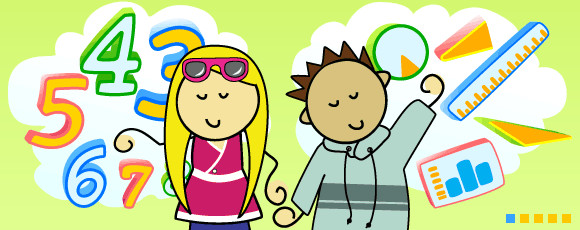Learning and Teaching

Mathematics Proficiencies
Did you know that mathematics isn’t just about content knowledge?
The proficiencies of Understanding, Fluency, Problem Solving and Reasoning are fundamental to learning Mathematics and working mathematically and are applied across all areas of the Mathematics Curriculum.
Understanding refers to students building a knowledge of adaptable and transferable mathematical concepts and structures. Students make connections and develop an understanding of the relationship between the ‘why’ and the ‘how’ of mathematics.
Students build understanding when they:
- connect related ideas
- represent concepts in different ways
- identify commonalities and differences between aspects of content
- describe their thinking mathematically
- interpret mathematical information.
Fluency describes students developing skills in choosing appropriate procedures, carrying out procedures flexibly, accurately, efficiently and appropriately, and recalling factual knowledge and concepts readily. Students are fluent when they:
- make reasonable estimates
- calculate answers efficiently
- recognise robust ways of answering questions
- choose appropriate methods and approximations
- recall definitions and regularly use facts,
- can manipulate expressions and equations to find solutions.
Problem solving is the ability of students to make choices, interpret, model and investigate problem situations, and communicate solutions effectively. Students pose and solve problems when they:
- use mathematics to represent unfamiliar or meaningful situations
- design investigations and plan their approaches
- apply their existing strategies to seek solutions
- verify that their answers are reasonable.
Reasoning refers to students developing a capacity for logical, statistical and probabilistic thinking and actions, such as proving, evaluating, explaining, inferring, justifying, refuting, abstracting and generalising. Students are reasoning mathematically when they:
- explain their thinking
- deduce and justify strategies used and conclusions reached
- adapt the known to the unknown
- transfer learning from one context to another
- prove that something is true or false
- make inferences about data or the likelihood of events
- compare and contrast related ideas and explain their choices.
Information taken from the Victorian Curriculum and Assessment Authority
Lea Drury
Mathematics Leader

